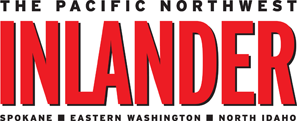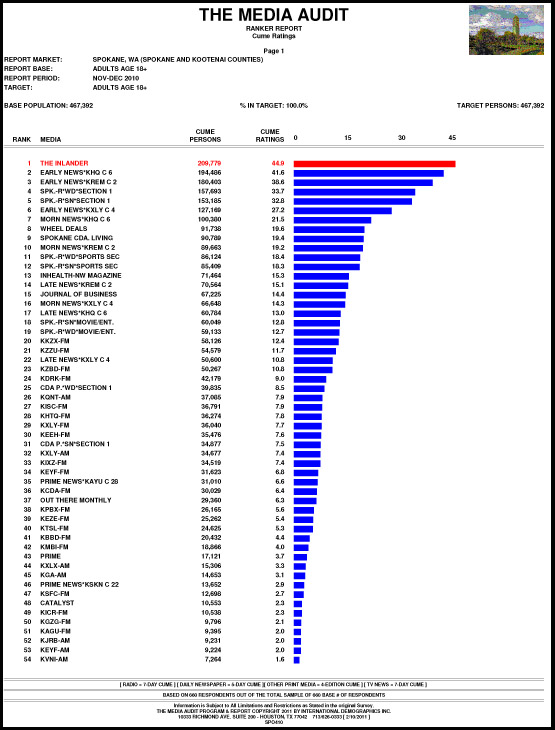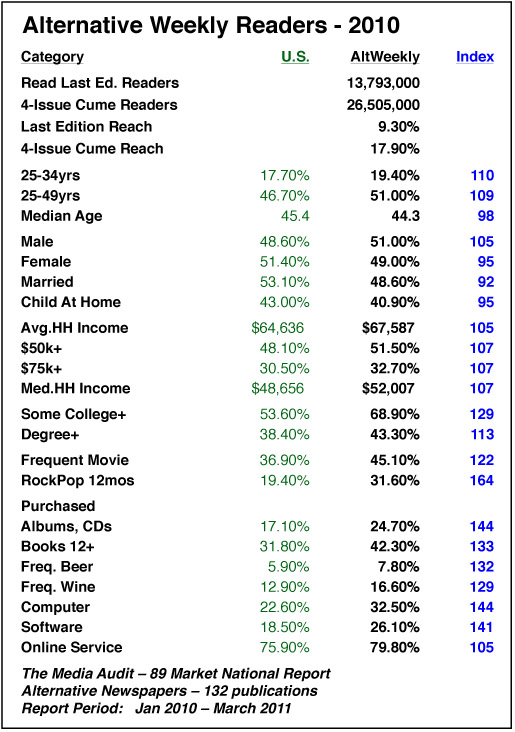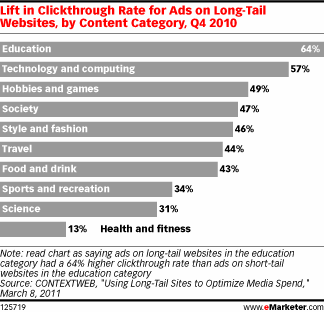By Sarah Billingsley, Communications Director
In a day when print, as a medium, is relegated to the ranks of 8 tracks and VHS tapes, it is more than a little encouraging to hear some good news on the print side of the alternative weekly industry. It turns out alternative weekly print products are not obsolete. In fact, they are very much a part of our communities. Readers continue to depend on alt weeklies, and follow the scent of these well-written, locally-focused publications.

Here’s a success story from Spokane, Washington. The Pacific Northwest Inlander has reached new heights in market penetration. According to the latest report from The Media Audit, the weekly publication has outpaced not only every section of the daily newspaper, but all other locally-produced media in the marketplace.
“Well, we finally scaled the mountain here – or at least the mountain as I’ve perceived it all these years,” reported Jer McGregor, General Manager of the Pacific NW Inlander
“Last year, in an effort to gain market share while our daily pulled back circulation and laid off staff, we decided to increase the number of distribution locations and total print run,” continued McGregor. “So, not only have we surpassed every section of the daily newspaper*, but we’ve also surpassed (for the first-time ever) all other media, all local television newscasts.”
“The 44.9% market penetration is our best-ever market penetration level, ” McGregor said in closing. ” We’ve been members of AWN about the same length of time we’ve had Media Audit – since the mid 90’s.”
*The Inlander has not yet surpassed the combined Sunday edition of the daily newspaper in the market, The Spokesman-Review but McGregor indicates they are close. Check out The Media Audit ranker report for the Spokane market and see their killer numbers for yourself.

Another media appearing on the ranker (at #13) is the local InHealthNW Magazine, also published by the Inlander and distributed separately in the marketplace.
Here’s more strong sales points in favor of alt weeklies from Jer McGregor:
Our company’s belief, similar to what can be found in the “Power of Print” campaign, is that success is in the product you deliver, not always how it is delivered. Our goal is to be the best at delivering “local” to our community, and being closely involved with as many local organizations as possible.
The free distribution method of alternative weeklies, unlike other traditional media, has not been interrupted. Television is now dealing with a wide range of competition from video games, cell phones, on-demand video and most of all DVR’s that allow users to skip commercials. Radio now competes with satellite broadcasts, iPods and the deregulation that’s lead to more big-format competition within its own ranks. Daily newspapers contend with their long-standing pay-for-service format that no longer appeals to as many users. Weekly newspapers are still available in communities as a desired free product providing important local news and entertainment coverage that so many people are interested in.
There’s been readership evidence to support our ongoing claims alternative weekly readers are young, affluent, and educated, but we also have proof in this market and probably a few others that an alt weekly publication will reach more than any other local media. And that’s good news.
 The noteworthy recommendations arrive at a time when the advertising industry (digital advertising in particular) is in need of standardization, transparency, and guidance.
The noteworthy recommendations arrive at a time when the advertising industry (digital advertising in particular) is in need of standardization, transparency, and guidance.


 By comparing clickthrough rate results via a research source CONTEXTWEB, certain content categories are shown to be higher performers and can add greatly to a major campaign like: Education, Technology and computing, hobbies and games. Even categories that don’t perform as well may result in a lift in ad delivery efficiency according to eMarketer. It’s certainly a winning proposition for ad buyers. (here’s one of the eMarketer charts)
By comparing clickthrough rate results via a research source CONTEXTWEB, certain content categories are shown to be higher performers and can add greatly to a major campaign like: Education, Technology and computing, hobbies and games. Even categories that don’t perform as well may result in a lift in ad delivery efficiency according to eMarketer. It’s certainly a winning proposition for ad buyers. (here’s one of the eMarketer charts)
